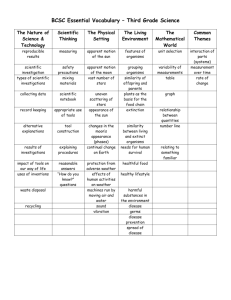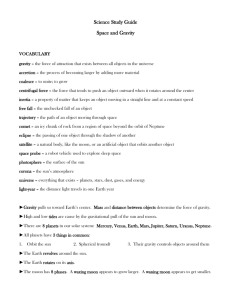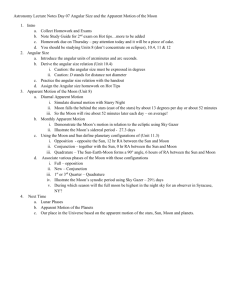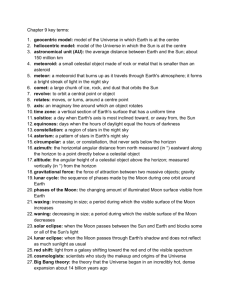science exam review sheet project
advertisement
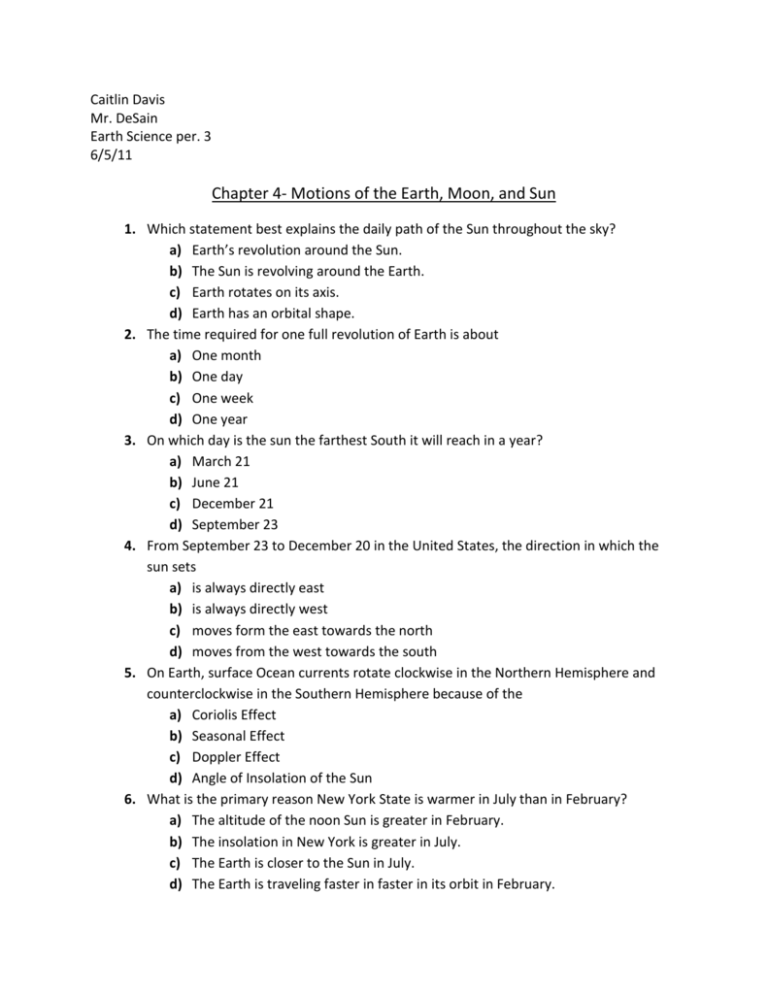
Caitlin Davis Mr. DeSain Earth Science per. 3 6/5/11 Chapter 4- Motions of the Earth, Moon, and Sun 1. Which statement best explains the daily path of the Sun throughout the sky? a) Earth’s revolution around the Sun. b) The Sun is revolving around the Earth. c) Earth rotates on its axis. d) Earth has an orbital shape. 2. The time required for one full revolution of Earth is about a) One month b) One day c) One week d) One year 3. On which day is the sun the farthest South it will reach in a year? a) March 21 b) June 21 c) December 21 d) September 23 4. From September 23 to December 20 in the United States, the direction in which the sun sets a) is always directly east b) is always directly west c) moves form the east towards the north d) moves from the west towards the south 5. On Earth, surface Ocean currents rotate clockwise in the Northern Hemisphere and counterclockwise in the Southern Hemisphere because of the a) Coriolis Effect b) Seasonal Effect c) Doppler Effect d) Angle of Insolation of the Sun 6. What is the primary reason New York State is warmer in July than in February? a) The altitude of the noon Sun is greater in February. b) The insolation in New York is greater in July. c) The Earth is closer to the Sun in July. d) The Earth is traveling faster in faster in its orbit in February. 7. What happens to the angle of insolation on June 21 between solar noon and 6 pm in New York State? a) It increases steadily. b) It remains the same. c) It first increases and then decreases. d) It decreases steadily. 8. In the Northern Hemisphere, during which season does the Earth reach its greatest distance from the sun? a) summer b) spring c) fall d) winter 9. Which is the best indication that the Moon’s distance from the Earth varies? a) The apparent change in the shape of the moon. b) The apparent change in the altitude of the moon. c) The apparent change in the diameter of the moon. d) The apparent change in the color of the moon. 10. Why do stars appear to move through the night sky at the rate of 15 degrees per hour? a) The stars actually revolve around the Earth at a rate of 15 degrees per hour. b) The Earth actually moves around the sun at a rate of 15 degrees per hour. c) The stars actually move around the center of the galaxy at a rate of 15 degrees per hour. d) The Earth actually rotates at a rate of 15 degrees per hour. Answer Key: 1) C 2) D 3) C 4) D 5) A 6) B 7) D 8) A 9) C 10) D
